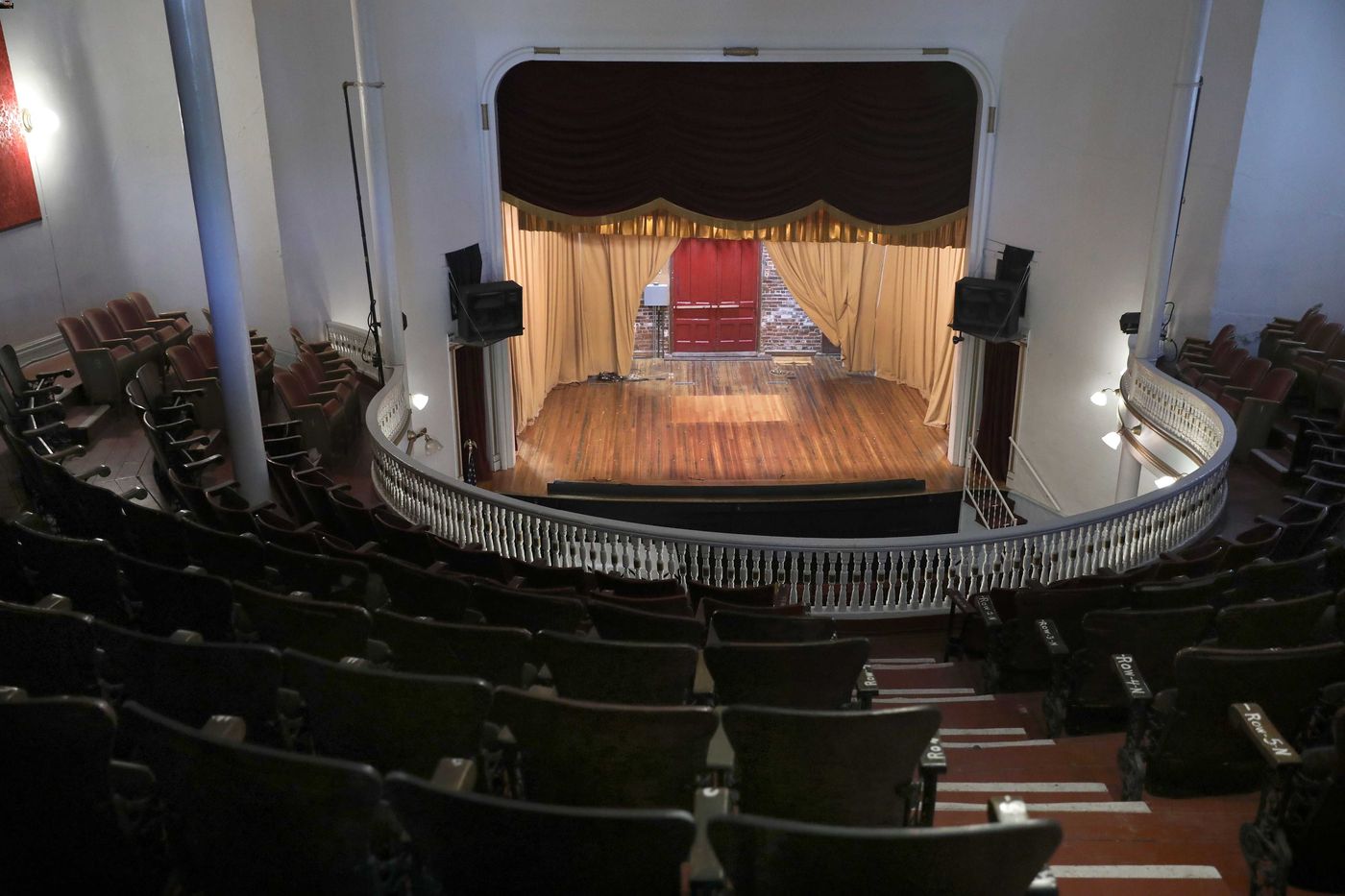Home>Events & Info>Opera>What Is A Lyric Opera


Opera
What Is A Lyric Opera
Modified: February 24, 2024
Discover the enchanting world of opera and immerse yourself in the beauty of lyric opera. Learn what opera is and experience the magic of this captivating art form.
(Many of the links in this article redirect to a specific reviewed product. Your purchase of these products through affiliate links helps to generate commission for AudioLover.com, at no extra cost. Learn more)
Table of Contents
- Introduction
- Definition of a Lyric Opera
- History of Lyric Opera
- Key Elements of a Lyric Opera
- Famous Lyric Operas
- Diversity in Lyric Opera
- The Role of Music in Lyric Opera
- Singers and Vocal Technique in Lyric Opera
- Staging and Set Design in Lyric Opera
- Audience Experience at a Lyric Opera Performance
- Conclusion
Introduction
Opera is a magnificent art form that has captivated audiences for centuries. With its combination of music, drama, and spectacle, it takes us on an emotional journey like no other. One particular genre of opera that has gained immense popularity is the lyric opera. In this article, we will explore the world of lyric opera, its rich history, key elements, famous productions, and the unique experience it offers to audiences.
A lyric opera is a subgenre of opera that places a strong emphasis on the beauty and expressiveness of the human voice. It showcases the power and versatility of singers, who bring the characters and stories to life through their vocal performances. The music in a lyric opera is typically melodic and emotive, allowing the audience to connect deeply with the emotions portrayed on stage.
The origins of lyric opera can be traced back to 17th-century Italy, where it emerged as a reaction against the more complex and formal styles of operatic composition at the time. Composers such as Claudio Monteverdi and Alessandro Scarlatti were pioneers in developing this new form of opera, infusing it with expressive melodies and lyrical vocal lines.
One of the defining characteristics of lyric opera is its focus on storytelling. The libretto, or the text of the opera, plays a crucial role in conveying the narrative and developing the characters. The themes explored in lyric opera vary widely, ranging from love, tragedy, and historical events to mythological and fantastical tales. This diversity allows for a wide range of emotions to be portrayed on stage, making lyric opera a truly immersive and compelling experience.
In terms of musical composition, lyric opera often features arias, duets, and ensembles that showcase the vocal prowess of the performers. These moments of heightened emotion and musical beauty are often accompanied by lush orchestration, with the orchestra playing a vital role in creating the atmosphere and supporting the singers.
The staging and set design in lyric opera are also key elements in creating a visually stunning and immersive experience. Elaborate sets, costumes, and lighting are used to transport the audience to different time periods and locations, adding to the overall grandeur of the production.
Attending a lyric opera performance is a unique experience that combines the visual, auditory, and emotional aspects of live theater. The audience is transported to a different world, where they can witness the power of the human voice and be swept away by the emotional intensity of the performances. Whether you are a seasoned opera lover or someone new to the genre, a lyric opera performance is sure to leave a lasting impression.
In this article, we will delve deeper into the history of lyric opera, explore the key elements that make it unique, and discuss some of the most famous lyric operas that have graced the stage. So join us on this enchanting journey into the world of lyric opera and discover the magic and beauty that this art form has to offer.
Definition of a Lyric Opera
A lyric opera is a subgenre of opera that focuses on the expressive power of the human voice and places a strong emphasis on melody and storytelling. It can be described as a marriage of music and drama, where vocal performances take center stage, captivating audiences with their beauty and emotive power.
In a lyric opera, the singers play a pivotal role in conveying the emotions and narrative of the story. The music is typically melodic and lyrical, allowing the voices to shine and convey the depth of the characters’ emotions. The vocal performances are often accompanied by lush orchestration, enhancing the overall impact and emotional resonance of the opera.
One of the key aspects of a lyric opera is its focus on storytelling. The libretto, or the text of the opera, is carefully crafted to convey the narrative and develop the characters. The themes explored in lyric opera can range from love and tragedy to historical events and mythological tales, offering a wide array of emotions and experiences for the audience to immerse themselves in.
The staging and set design in a lyric opera are also important elements that contribute to the overall experience. Elaborate sets, costumes, and lighting are used to create visually stunning and immersive performances, transporting the audience to different worlds and time periods. The combination of music, singing, acting, and visual elements creates a multisensory experience that captivates and enthralls the audience.
While lyric opera celebrates the beauty and expressiveness of the human voice, it is not limited to a specific vocal range or style. It encompasses a wide range of vocal techniques and styles, from dramatic sopranos and powerful tenors to agile coloratura sopranos and rich baritones. The diversity of voices and vocal techniques adds depth and variety to the performances, contributing to the overall richness of the opera.
In summary, a lyric opera is a subgenre of opera that focuses on the power of the human voice, melodious music, and compelling storytelling. It combines music, drama, and visual elements to create a captivating and immersive experience for the audience. Whether it’s the breathtaking vocal performances, the emotional depth of the story, or the visual spectacle on stage, a lyric opera is a true masterpiece that showcases the beauty and expressive potential of this exquisite art form.
History of Lyric Opera
The history of lyric opera can be traced back to 17th-century Italy, where it emerged as a reaction against the more complex and formal styles of operatic composition at the time. It was during this period that opera as a genre began to take shape, with composers experimenting with new forms of musical expression and storytelling.
One of the pioneers of lyric opera was Claudio Monteverdi, who composed works such as “L’Orfeo” (1607) and “Il ritorno d’Ulisse in patria” (1640). Monteverdi’s operas showcased a greater emphasis on the beauty and expressiveness of the human voice, with lyrical vocal lines and emotional depth that resonated with audiences.
As the popularity of opera grew, so did the demand for more accessible and emotionally compelling works. Alessandro Scarlatti, another influential composer of the time, helped to further develop the lyric opera style. His compositions, such as “Gli equivoci nel sembiante” (1679) and “Mitridate Eupatore” (1707), were characterized by melodic beauty and expressive singing, setting the stage for future lyric operas.
During the 18th and 19th centuries, lyric opera flourished across Europe, with composers such as Wolfgang Amadeus Mozart, Giuseppe Verdi, and Richard Wagner making significant contributions to the genre. Mozart’s operas, such as “The Marriage of Figaro” (1786) and “Don Giovanni” (1787), showcased his mastery of melody and storytelling, while Verdi’s works, including “La Traviata” (1853) and “Rigoletto” (1851), displayed a deep understanding of the human voice and its dramatic potential.
Richard Wagner, known for his epic and ambitious operas, also made a lasting impact on the evolution of lyric opera. Wagner’s works, such as “Tristan und Isolde” (1865) and “The Ring of the Nibelung” (1876), pushed the boundaries of the genre, combining grand orchestration, intricate vocal writing, and complex storytelling to create truly monumental works of art.
In the 20th century, composers continued to explore new avenues in lyric opera. From the lush and romantic works of Giacomo Puccini, such as “La Bohème” (1896) and “Madama Butterfly” (1904), to the innovative and experimental compositions of Benjamin Britten, including “Peter Grimes” (1945) and “Billy Budd” (1951), lyric opera continued to evolve and adapt to the changing musical landscape.
Today, lyric opera remains a vibrant and vital part of the opera repertoire. Companies around the world continue to stage productions of classic works from the past as well as new and exciting compositions. The history of lyric opera is a testament to the enduring power of this art form and its ability to inspire and move audiences with its captivating music, compelling storytelling, and the sheer beauty of the human voice.
Key Elements of a Lyric Opera
A lyric opera is characterized by several key elements that contribute to its unique and captivating nature. These elements work together to create a cohesive and immersive experience for the audience. Let’s explore some of the essential ingredients that make up a lyric opera.
1. Emphasis on the Human Voice: The human voice takes center stage in a lyric opera. The vocal performances of the singers are the heart and soul of the production, conveying the emotions and narrative of the story. The music is written to showcase the beauty and expressiveness of the voices, with melodic lines and dramatic moments that allow the singers to shine.
2. Melodic and Lyrical Music: The music in a lyric opera is typically melodic and lyrical, with memorable melodies that capture the emotions and essence of the characters. The songs, arias, and ensembles in a lyric opera are often filled with expressive phrases and soaring melodies that resonate with the audience.
3. Compelling Storytelling: The libretto, or the text of the opera, is carefully crafted to convey the narrative and develop the characters. The story in a lyric opera is often filled with passion, love, tragedy, and human emotions, allowing the audience to connect deeply with the characters and their experiences.
4. Powerful Orchestration: The music in a lyric opera is typically accompanied by a full orchestra, adding depth and richness to the performances. The orchestration is carefully crafted to support and enhance the voices, creating a harmonious blend of sound that elevates the emotional impact of the opera.
5. Visual Spectacle: The staging and set design in a lyric opera play a crucial role in creating a visually stunning and immersive experience. Elaborate sets, costumes, and lighting are used to transport the audience to different time periods and locations, adding to the grandeur and aesthetic appeal of the production.
6. Ensemble Performances: Lyric operas often feature ensemble performances, where multiple characters sing together, creating a rich and layered musical experience. These moments of musical collaboration and harmony between the singers add depth and complexity to the opera, showcasing the vocal talents of the performers working in unison.
7. Emotional Impact: One of the primary objectives of a lyric opera is to evoke strong emotions in the audience. Through the combination of music, singing, acting, and storytelling, a lyric opera has the power to move and touch the hearts of the audience, often leaving a lasting emotional impact long after the performance has ended.
In summary, the key elements of a lyric opera include the emphasis on the human voice, melodic and lyrical music, compelling storytelling, powerful orchestration, visual spectacle, ensemble performances, and the ability to create a strong emotional impact. These elements work harmoniously together to create an enchanting and unforgettable experience for both seasoned opera enthusiasts and newcomers alike.
Famous Lyric Operas
Throughout history, numerous lyric operas have captivated audiences with their extraordinary music, compelling stories, and memorable characters. These operas have become staples of the repertoire and continue to be performed on stages around the world. Let’s explore some of the most famous lyric operas that have left an indelible mark on the opera world.
1. “La bohème” by Giacomo Puccini: Set in 19th-century Paris, this tragic love story follows a group of struggling artists and their romantic entanglements. With Puccini’s lush and lyrical music, “La bohème” is renowned for its emotional depth and iconic arias, such as “Che gelida manina” and “O soave fanciulla.”
2. “Carmen” by Georges Bizet: Set in Seville, Spain, “Carmen” tells the passionate and tempestuous story of a fiery gypsy woman and her doomed love affairs. With its vibrant melodies, infectious rhythms, and the unforgettable character of Carmen, this opera has become an enduring favorite in the repertoire.
3. “The Marriage of Figaro” by Wolfgang Amadeus Mozart: This comedic masterpiece explores love, desire, and the games of seduction in a complex web of relationships. Mozart’s sublime music perfectly captures the wit and charm of the characters and includes some of the most beloved arias in opera, such as “Dove sono” and “Non più andrai.”
4. “Aida” by Giuseppe Verdi: Set in ancient Egypt, “Aida” is a grand opera that tells the story of a conflicted love triangle between an Ethiopian princess, an Egyptian military commander, and the Pharaoh’s daughter. With its powerful and dramatic music, “Aida” showcases Verdi’s mastery of orchestration and his ability to create emotional intensity.
5. “Madama Butterfly” by Giacomo Puccini: This heartbreaking tale follows the tragic story of a young Japanese woman who is abandoned by her American husband. With Puccini’s evocative score and the iconic aria “Un bel dì vedremo,” “Madama Butterfly” is known for its exquisite beauty and profound emotional impact.
6. “Don Giovanni” by Wolfgang Amadeus Mozart: This dark and dramatic opera explores the exploits of the infamous seducer Don Giovanni and his ultimate descent into damnation. Mozart’s music brilliantly captures the complexity of the characters and their internal conflicts, making “Don Giovanni” a deeply psychological and musically compelling work.
7. “Tristan und Isolde” by Richard Wagner: This epic and transcendent opera delves into the themes of love, desire, and the longing for an ideal that transcends earthly limits. Wagner’s groundbreaking use of chromatic harmony and the famous “Tristan chord” creates an otherworldly atmosphere, making “Tristan und Isolde” a monumental and transformative experience.
These are just a few examples of the countless famous lyric operas that have enchanted generations of opera lovers. Each opera has its own unique story, characters, and musical style, but they all share the ability to move and captivate audiences. Whether attending a live performance or listening to a recording, experiencing the magic of these famous lyric operas is an unforgettable journey into the heart of this exquisite art form.
Diversity in Lyric Opera
Lyric opera has evolved over the centuries to embrace diversity, both in terms of the stories it tells and the performers who bring those stories to life. Today, the world of lyric opera celebrates a wide range of cultures, perspectives, and artistic expressions, creating a more inclusive and vibrant art form. Let’s explore the diversity that enriches the world of lyric opera.
One aspect of diversity in lyric opera is the range of stories and themes that are explored. Operas delve into historical events, mythological tales, literary adaptations, and contemporary issues. Whether it’s an ancient Greek tragedy, a Shakespearean drama, or a modern-day narrative, the diverse array of operas ensures a rich tapestry of storytelling that resonates with audiences from different backgrounds.
Another element of diversity in lyric opera lies in the composers and librettists who create the music and libretto. Composers from various cultures and time periods have contributed to the opera repertoire. From Italian, French, and German composers such as Verdi, Puccini, and Wagner, to Russian composers like Tchaikovsky and Mussorgsky, lyric opera showcases a global musical heritage that spans continents and generations.
Lyric opera also embraces diversity through its performers. Opera companies strive for inclusivity and equal representation on stage, opening opportunities for artists of different races, ethnicities, and nationalities. This not only reflects the multicultural fabric of society but also allows for diverse perspectives and interpretations of characters and narratives.
Furthermore, vocal diversity is an integral part of lyric opera. This genre encompasses a wide range of voice types and vocal techniques, allowing for representation and celebration of various vocal styles. From the purity and agility of coloratura sopranos to the richness and depth of bass-baritones, each voice type brings its unique timbre and expressive capabilities to the opera stage.
In recent years, there has been a greater emphasis on diversity and inclusion in the selection of opera productions. Opera companies and directors strive to present works that reflect the diversity of their communities and engage with a wider audience. This includes showcasing works by underrepresented composers, reviving forgotten or lesser-known operas, and embracing innovative interpretations that challenge traditional norms.
Within the opera community, efforts are also being made to foster diversity behind the scenes. Opera companies work to ensure diversity among their staff, production teams, and creative personnel. This inclusivity extends to directors, conductors, designers, and technicians who contribute their artistic talents to bring operatic productions to life.
Diversity in lyric opera not only adds richness and depth to the art form but also creates a broader cultural dialogue that reflects the world we live in. By embracing diverse stories, voices, and perspectives, lyric opera continues to evolve and resonate with audiences from different backgrounds. It offers a platform for artistic expression, dialogue, and understanding, making it a truly inclusive and powerful form of artistic communication.
The Role of Music in Lyric Opera
Music is at the heart of lyric opera, playing a central and defining role in its creation and performance. It serves as the primary means of storytelling, emotional expression, and artistic communication. The music in a lyric opera has the power to transport audiences, evoke emotions, and bring the characters and narratives to life. Let’s explore the multifaceted role of music in lyric opera.
1. Storytelling: Music serves as a powerful tool for storytelling in lyric opera. Composers carefully craft melodies, harmonies, and motifs that capture the essence of each character and convey the emotions and narrative of the story. Through the music, the audience can follow the plot, understand the motivations of the characters, and experience their journey on a deeply emotional level.
2. Emotional Expression: The music in lyric opera has the ability to express a wide range of emotions, from joy and love to despair and tragedy. Composers employ different musical techniques, such as dynamics, tempo, and tonal colors, to create contrasting moods and reflect the emotional states of the characters. The music draws the audience into the emotional world of the opera, allowing them to connect with the characters and experience their joys and sorrows.
3. Character Development: The music in a lyric opera plays a crucial role in developing the characters. Each character is assigned specific musical themes or motifs that represent their personality, desires, and struggles. Through the use of leitmotifs, recurring melodies, and variations, composers create musical associations that help the audience identify and understand the characters’ motivations and relationships.
4. Vocal Showcase: Lyric opera celebrates and showcases the power and beauty of the human voice. The music is specifically composed to highlight the vocal abilities and range of the singers. Arias, duets, and ensembles provide opportunities for the singers to demonstrate their technical skill, expressiveness, and interpretive artistry. The music allows the singers to convey the depth of the characters’ emotions and engage the audience through their vocal performances.
5. Orchestration and Atmosphere: In lyric opera, the orchestration plays a crucial role in creating atmosphere, setting the mood, and enhancing the emotional impact of the music. The orchestra brings depth and richness to the vocal performances, supporting the singers and adding texture and color to the overall sound. Composers employ a variety of instruments and musical techniques to create a cohesive and immersive musical experience.
6. Musical Structure: The music in a lyric opera is carefully structured, with a combination of recitative, arias, ensembles, and orchestral interludes. Each musical section serves a purpose, advancing the plot, revealing the characters’ inner thoughts, or providing moments of reflection and contemplation. The structure of the music contributes to the overall dramatic arc of the opera, creating tension, resolution, and climactic moments.
In summary, the role of music in lyric opera is multi-faceted and essential. It serves as a powerful storytelling tool, expressing a wide range of emotions, developing the characters, showcasing the vocal abilities of the singers, creating atmosphere, and providing a structured framework for the opera. The music in lyric opera is a vital and integral part of the overall artistic experience, captivating the audience and immersing them in the world of the opera.
Singers and Vocal Technique in Lyric Opera
In the world of lyric opera, singers are the true stars, captivating audiences with their powerful and emotive voices. They are the ones who bring the characters and stories to life, using their vocal technique and artistic interpretation to deliver captivating performances. Let’s explore the role of singers and the vocal techniques employed in lyric opera.
Voice Types: Lyric opera encompasses a wide range of voice types, each with its own unique qualities and characteristics. The classification of voice types includes sopranos, mezzo-sopranos, contraltos, tenors, baritones, and basses. Each voice type brings its distinctive vocal color, range, and tessitura to the opera, adding depth and variety to the performances.
Technical Skill: Singers in lyric opera must possess exceptional technical skill to navigate the intricate vocal demands of the repertoire. This includes mastery of breath control, vocal agility, phrasing, diction, and projection. The ability to maintain vocal consistency across a wide range of dynamics and emotions is crucial for delivering powerful and nuanced performances.
Vocal Range and Tessitura: Singers in lyric opera are required to navigate a wide vocal range, both in terms of pitch and emotional expressiveness. The soprano voice, for example, can span from the delicate high notes of a coloratura soprano to the rich and powerful notes of a dramatic soprano. Each voice type has its own optimal tessitura, or comfortable range, where the voice resonates best and can showcase its full potential.
Expressiveness: Singing in lyric opera goes beyond technical proficiency; it requires the ability to convey profound emotions and tell stories through the voice. Singers must possess the interpretive skills to bring the characters to life, portraying their joys, sorrows, hopes, and fears. They use vocal color, dynamics, and phrasing to convey the full emotional range of the character, allowing the audience to connect deeply with the performance.
Language Proficiency: Singers in lyric opera must also have a strong command of multiple languages. Operas are performed in various languages, including Italian, French, German, Russian, and English. Singers are expected to have a solid understanding of the pronunciation, diction, and nuances of the respective languages to ensure clear communication of the text and convey the intended meaning to the audience.
Artistic Interpretation: The best singers in lyric opera not only possess technical skill but also have a unique artistic interpretation. They bring their individual flair and personal understanding of the characters and music, adding depth and nuance to their performances. This artistic interpretation allows for fresh and engaging renditions of well-known operas and contributes to the evolution and interpretation of the operatic repertoire.
In summary, singers in lyric opera are highly skilled artists who utilize their vocal technique, range, expressiveness, language proficiency, and artistic interpretation to create compelling performances. They embody the essence of the characters, conveying emotions and telling stories through their powerful voices. The beauty and power of their singing elevate the experience of lyric opera, making it a truly magical and captivating art form.
Staging and Set Design in Lyric Opera
Staging and set design are essential elements in creating a visually stunning and immersive experience in lyric opera. The combination of carefully crafted sets, costumes, lighting, and stage direction transport the audience to different worlds, adding to the overall grandeur and aesthetic appeal of the opera. Let’s explore the role of staging and set design in bringing lyric opera to life.
Set Design: The set design in a lyric opera is a crucial component in creating the visual backdrop for the performance. It encompasses the physical structures and scenery on the stage, including backdrops, walls, furniture, props, and various set pieces. The sets are designed to reflect the time period and location of the opera, creating an immersive environment that enhances the storytelling and the audience’s understanding of the narrative.
Costumes: Costumes play a significant role in defining the characters and portraying their identities, social standing, and emotions. The costumes in lyric opera are meticulously designed to reflect the historical period or the artistic concept of the production. They contribute to the visual spectacle, capturing the essence of the characters and adding depth and authenticity to their portrayal.
Lighting: Lighting design in lyric opera is essential in setting the mood and enhancing the visual impact of the performance. Lighting effects, including color, intensity, and direction, help create the desired atmosphere, highlight key moments, and draw attention to specific characters or areas of the stage. Lighting design works in harmony with the music, acting, and set design to create a cohesive and captivating experience for the audience.
Stage Direction: The stage director’s vision and direction determine the placement, movement, and interactions of the performers on stage. Stage direction in lyric opera is a collaborative effort between the director, singers, and other production staff. It ensures that the performers effectively convey the emotions and dramatic moments of the opera, utilizing the stage space to its fullest potential.
Sets and Scene Changes: Lyric opera often features elaborate and dynamic sets, with scene changes that take the audience from one location to another. Set changes are carefully choreographed to seamlessly transition between scenes, allowing for smooth continuity in the storytelling. The sets themselves may be designed to move, rotate, or transform, enhancing the visual experience and adding to the overall spectacle of the opera.
Visual Symbolism and Metaphor: Set design in lyric opera can incorporate visual symbolism and metaphor, adding depth and layers of meaning to the production. The sets may be designed to represent abstract concepts or evoke specific emotions, creating a symbolic resonance that enhances the audience’s interpretation and engagement with the opera.
In summary, staging and set design are integral components of lyric opera, contributing to the visual spectacle and immersive experience. The thoughtful and creative design of sets, costumes, lighting, and stage direction enhances the storytelling, captures the essence of the characters and their world, and creates a captivating and memorable visual experience for the audience. Staging and set design bring the opera to life, elevating and enriching the overall artistic impact of the performance.
Audience Experience at a Lyric Opera Performance
Attending a lyric opera performance is an enchanting experience that combines the visual, auditory, and emotional elements of live theater. From the moment the curtain rises to the final notes of the opera, the audience is transported to a world of music, drama, and spectacle. Let’s explore the unique and immersive experience that awaits those who attend a lyric opera performance.
The Venue: Lyric opera performances are typically held in grand theaters or opera houses designed to enhance the acoustics and provide an aesthetically pleasing ambience. These architectural masterpieces often feature ornate interiors, lush décor, and breathtaking chandeliers, creating an atmosphere of elegance and grandeur. The venue itself adds to the anticipation and excitement of the opera experience.
The Setting: As the lights dim and the curtain rises, the audience is transported to a different world. Elaborate set designs, accomplished through meticulous craftsmanship, bring the opera’s world to life. From realistic depictions of historical periods to imaginative and abstract interpretations, the sets create a visually captivating backdrop that enhances the storytelling and engages the imagination.
The Music: The music in a lyric opera is performed by a live orchestra, adding a sense of authenticity and vibrancy to the performance. From the first notes of the overture to the final crescendo, the rich and emotive melodies envelop the audience, creating a powerful and immersive sonic experience. The orchestra, under the guidance of the conductor, complements and supports the singers, enhancing the emotional impact of the opera.
The Singers: The singers, with their exceptional vocal abilities and expressive performances, are the focal point of the opera. Their commanding stage presence and refined technique bring the characters to life, evoking emotions and captivating the audience. The power and beauty of their voices, coupled with their dramatic interpretation, create visceral and memorable moments throughout the performance.
The Acting: In addition to their vocal prowess, the singers’ acting skills contribute to the immersive experience. Through their gestures, facial expressions, and body language, they convey the characters’ emotions and motivations, bringing depth and realism to their portrayal. The synergy between the singing and the acting creates a fully realized performance that engages and resonates with the audience.
The Emotional Journey: Lyric operas often explore universally relatable themes of love, passion, betrayal, and tragedy. As the audience witnesses the challenges, triumphs, and heartbreaks of the characters, they embark on an emotional journey. The combination of music, acting, and storytelling ignites a range of emotions within the audience, from joy and excitement to sadness and introspection, creating a deeply personal and affecting experience.
The Visual Spectacle: The visual elements of lyric opera, including costumes, set designs, lighting, and stage effects, enhance the overall spectacle. The intricate costumes transport the audience to different time periods and cultures, creating a visual feast for the eyes. The lighting design adds depth, mood, and focus to the performances, while stage effects and choreography captivate with their artistry and creativity.
The Collective Experience: Attending a lyric opera performance is a shared experience. The collective presence of fellow audience members adds to the atmosphere and anticipation. The shared emotions of laughter, applause, and even tears create a sense of community and connection among the attendees. The applause and standing ovations at the end of each act or performance reflect the collective appreciation and admiration for the artists and their craft.
In summary, the audience experience at a lyric opera performance is a multi-dimensional journey of sight, sound, and emotion. From the moment the audience enters the grand theater, they are enveloped in an atmosphere of anticipation and beauty. From the powerful music and captivating performances to the visually stunning sets and costumes, attending a lyric opera performance is an immersive experience that lingers in the hearts and minds of the audience long after the final curtain falls.
Conclusion
Lyric opera is a remarkable art form that combines music, drama, and visual spectacle to create an immersive and enchanting experience for audiences. From its origins in 17th-century Italy to the present day, lyric opera has evolved and flourished, captivating audiences with its powerful storytelling, exquisite music, and breathtaking performances.
Throughout this article, we have explored the key elements that define lyric opera, from its emphasis on the expressive power of the human voice to its compelling storytelling and grand orchestration. We have delved into the rich history of lyric opera, highlighting famous works and composers who have shaped the genre. We have celebrated the diversity that has embraced lyric opera, both in terms of the stories it tells and the performers who bring those stories to life.
We have also examined the role of music in lyric opera, recognizing its ability to captivate and transport audiences with its melodic beauty, emotional depth, and intricate storytelling. The singers and their vocal technique play a crucial role in delivering powerful and evocative performances that resonate long after the opera is over. The staging and set designs complete the experience, creating a visually stunning and immersive world that enhances the storytelling and engages the audience’s senses.
Attending a lyric opera performance is a unique and memorable experience. The grand theaters, the anticipation in the air, and the collective energy of the audience all contribute to the magic and allure of the opera. From the moment the lights dim and the curtains rise, the audience is transported to a world of music, emotion, and visual splendor.
In conclusion, lyric opera is a captivating art form that has stood the test of time. It continues to enchant audiences with its timeless stories, evocative music, and powerful performances. Whether experiencing the beauty of a classic opera or embracing innovative and modern interpretations, lyric opera offers an immersive and inspiring journey into the realm of human emotions and artistic expression. So, let the curtain rise, let the music soar, and let the world of lyric opera fill your heart and soul with its magic and beauty.

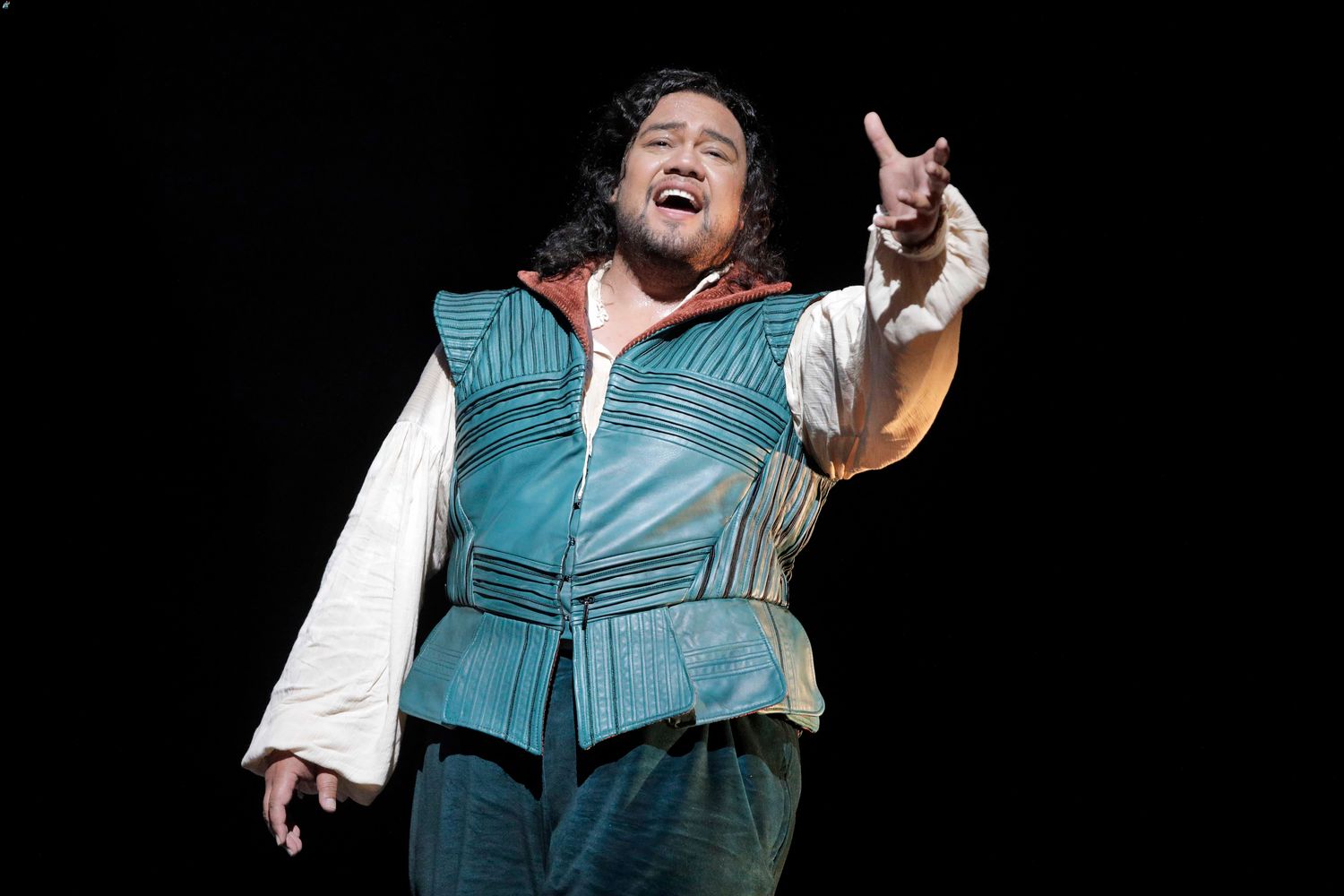

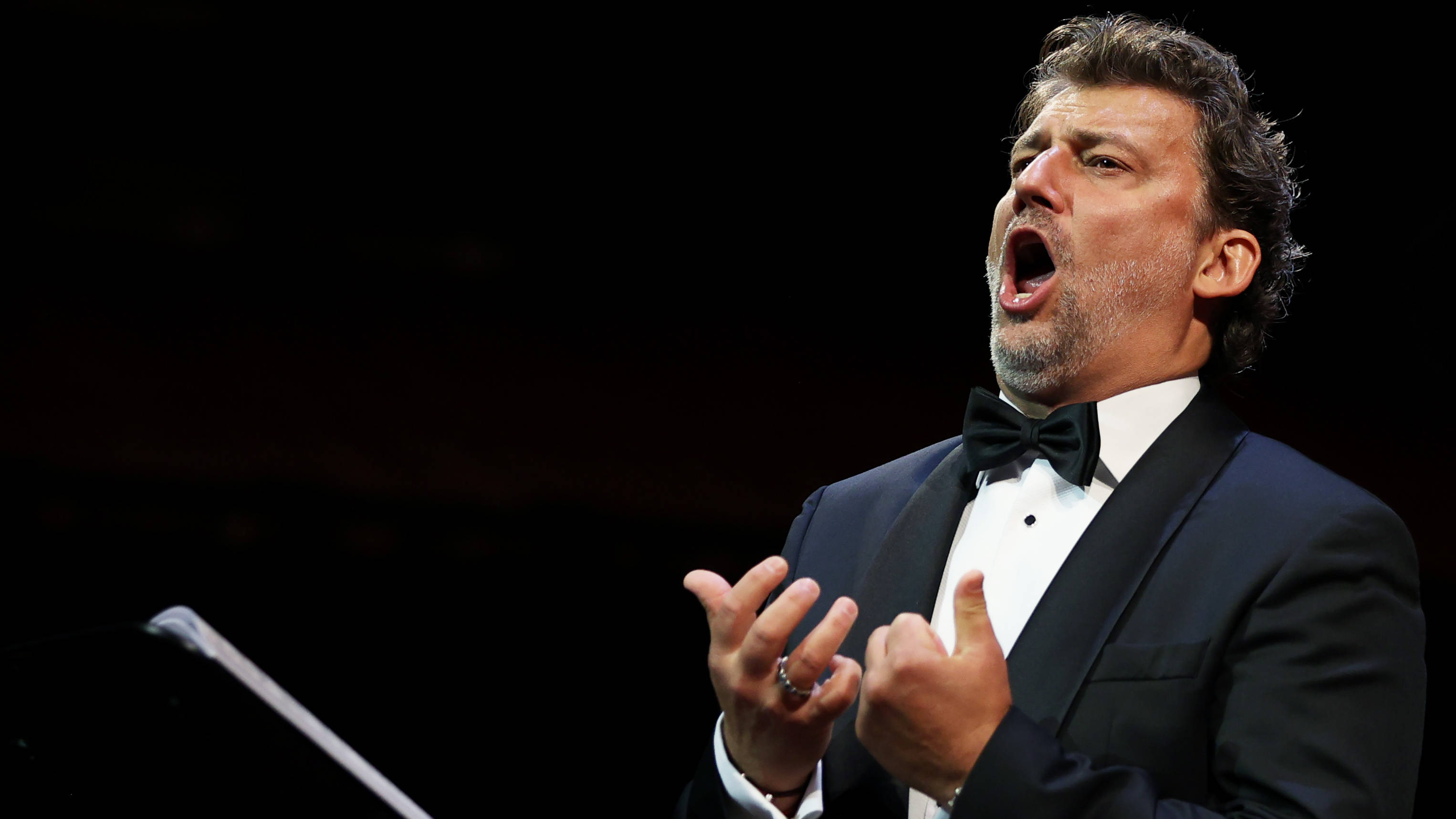

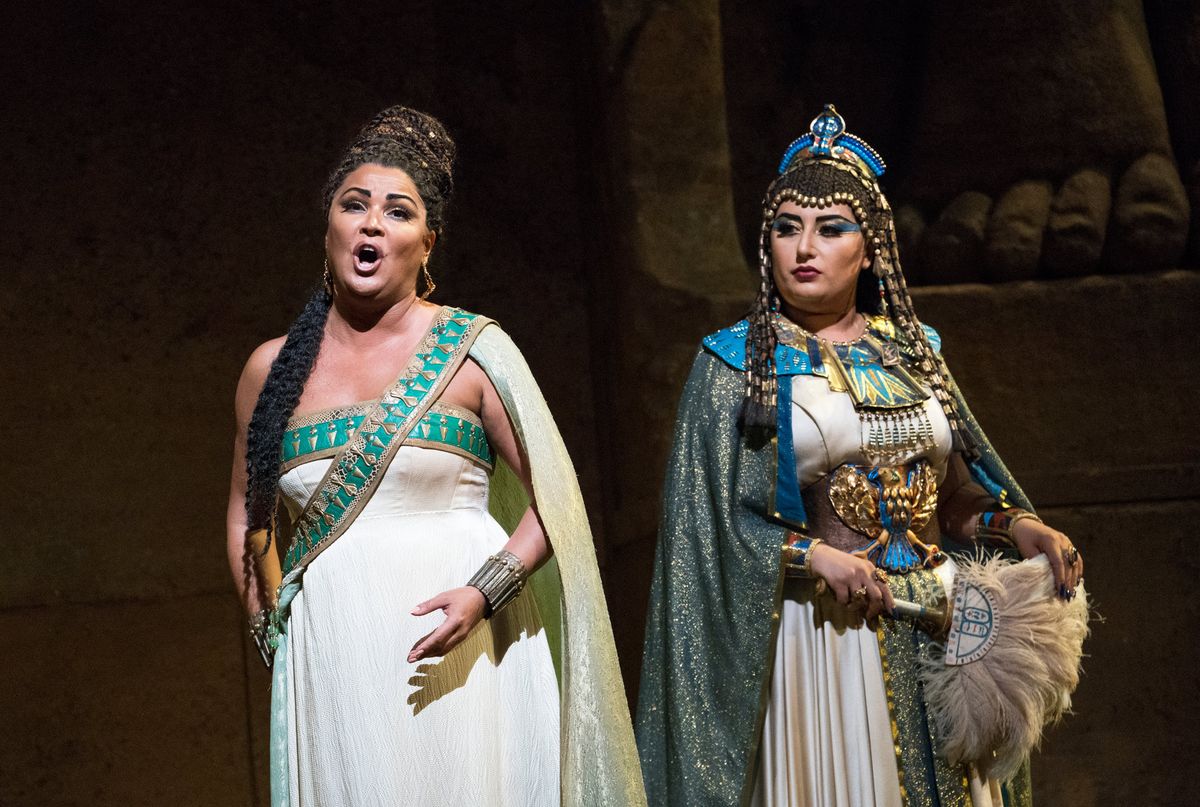
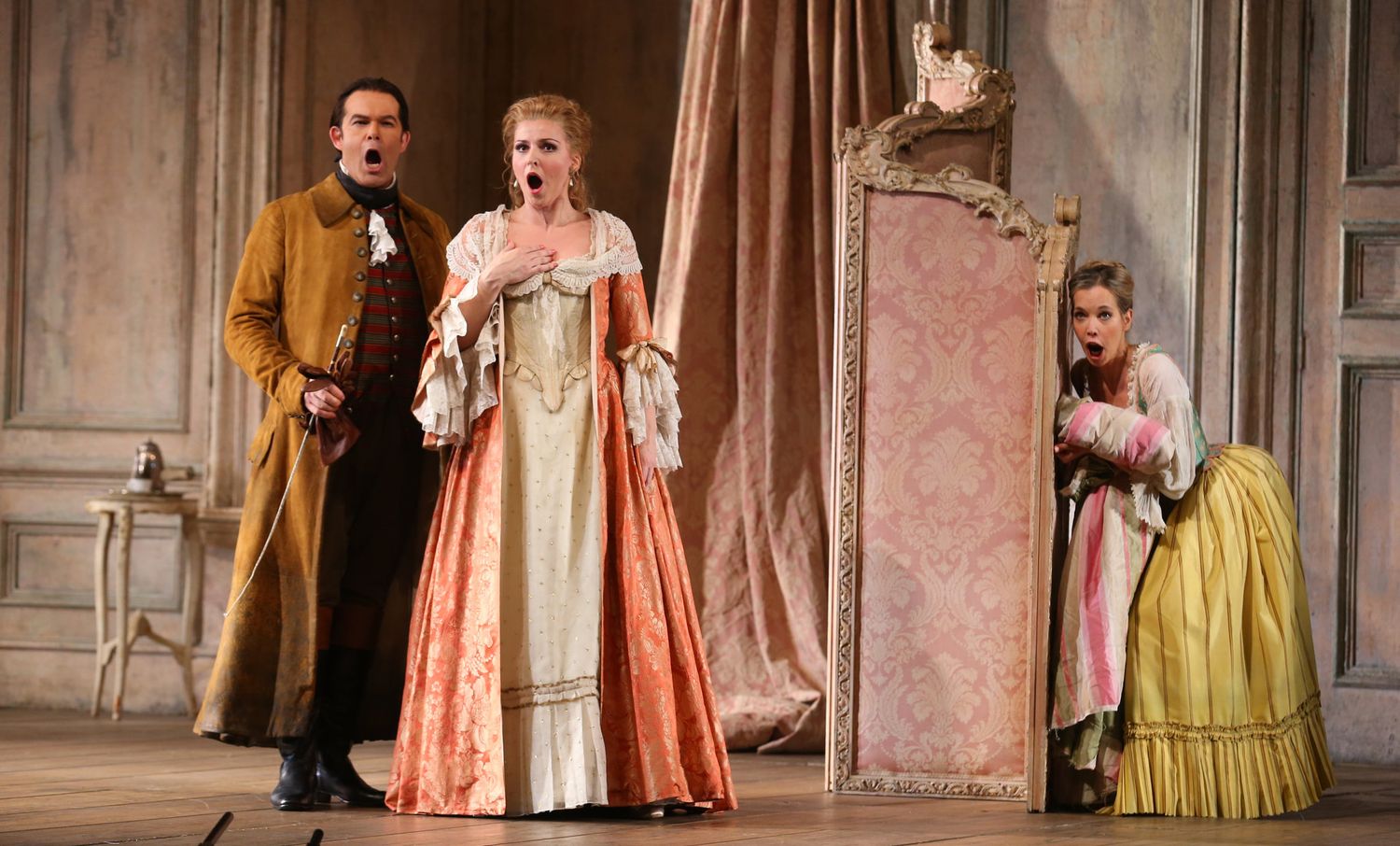
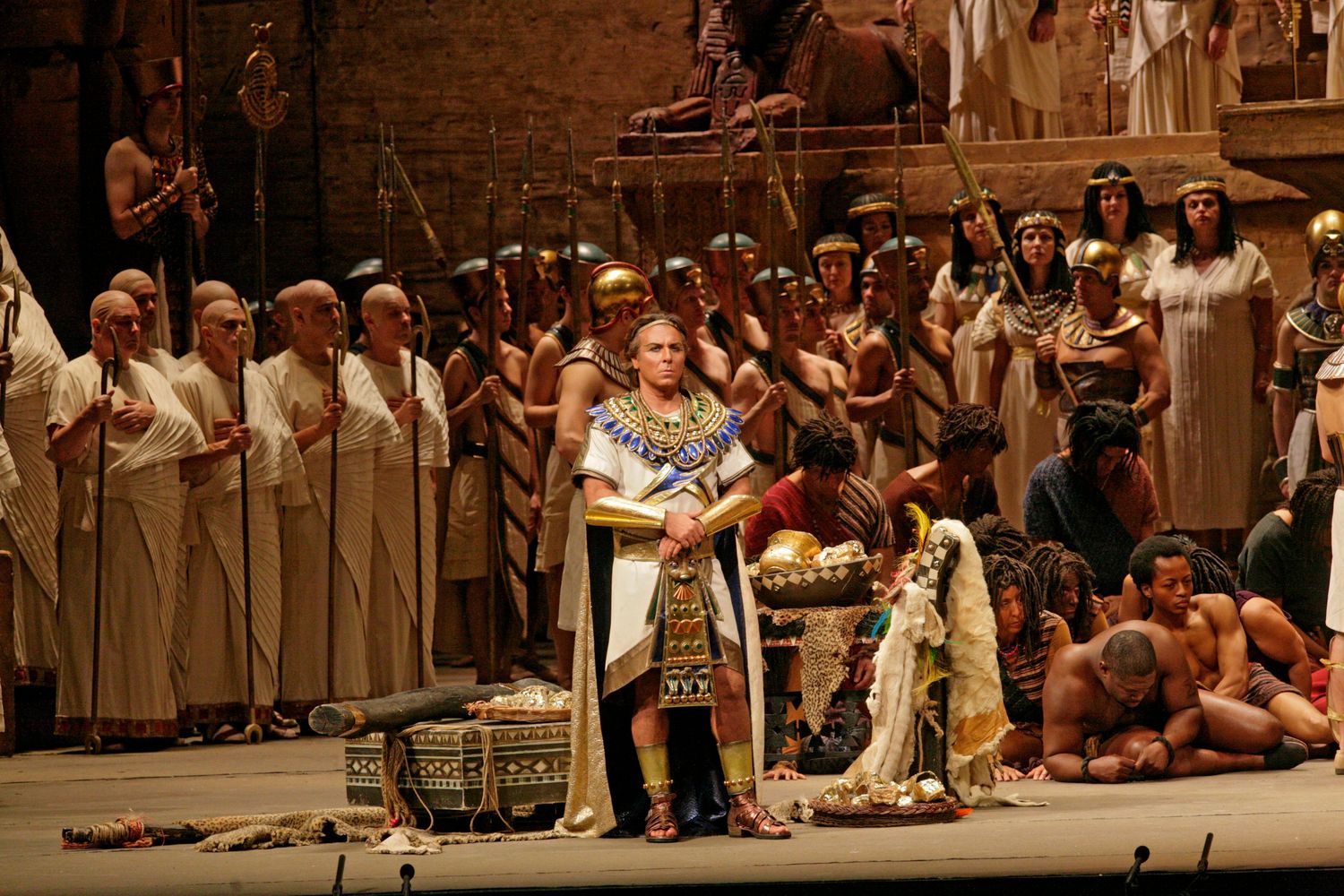

![Lyrics High You Are[Branchez Remix] What So Not](https://audiolover.com/wp-content/uploads/2023/11/lyrics-high-you-arebranchez-remix-what-so-not-1699242564.jpg)
